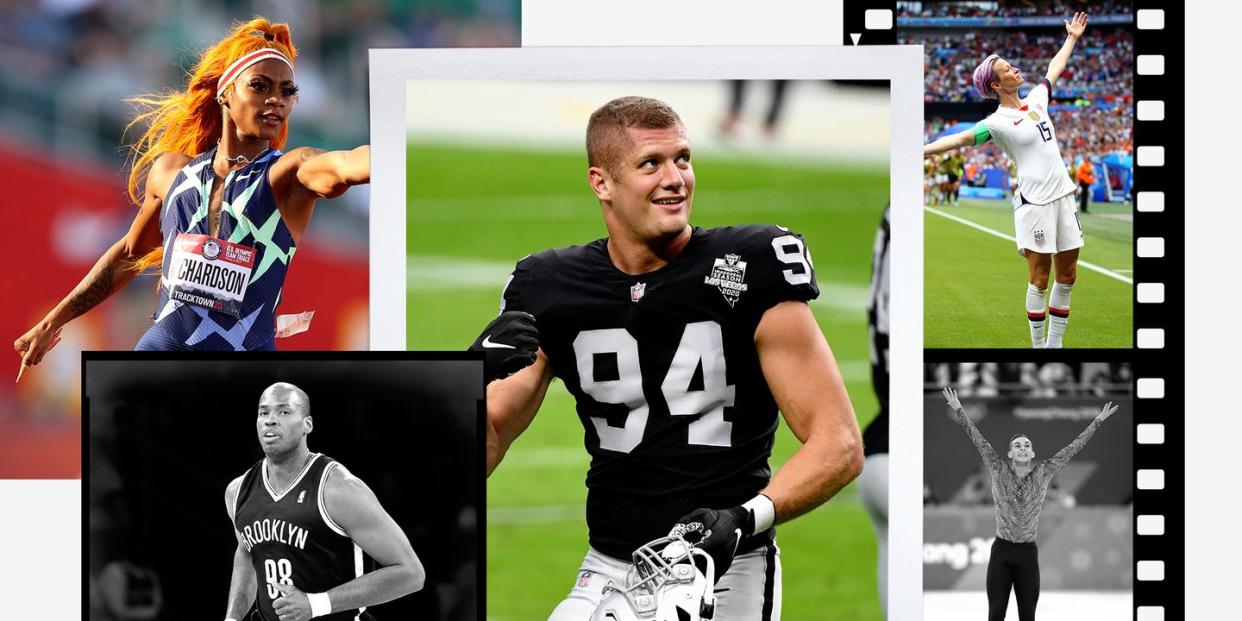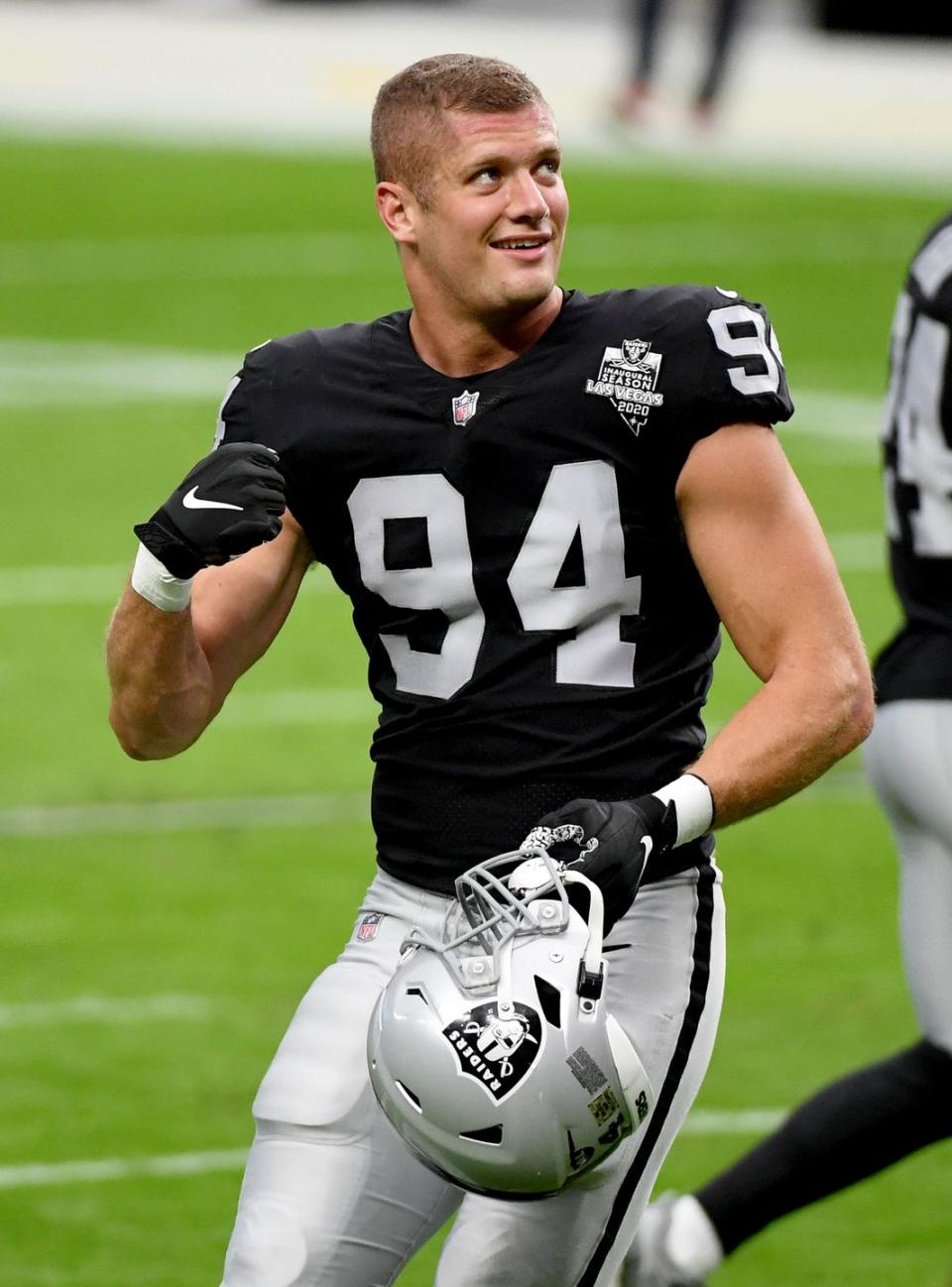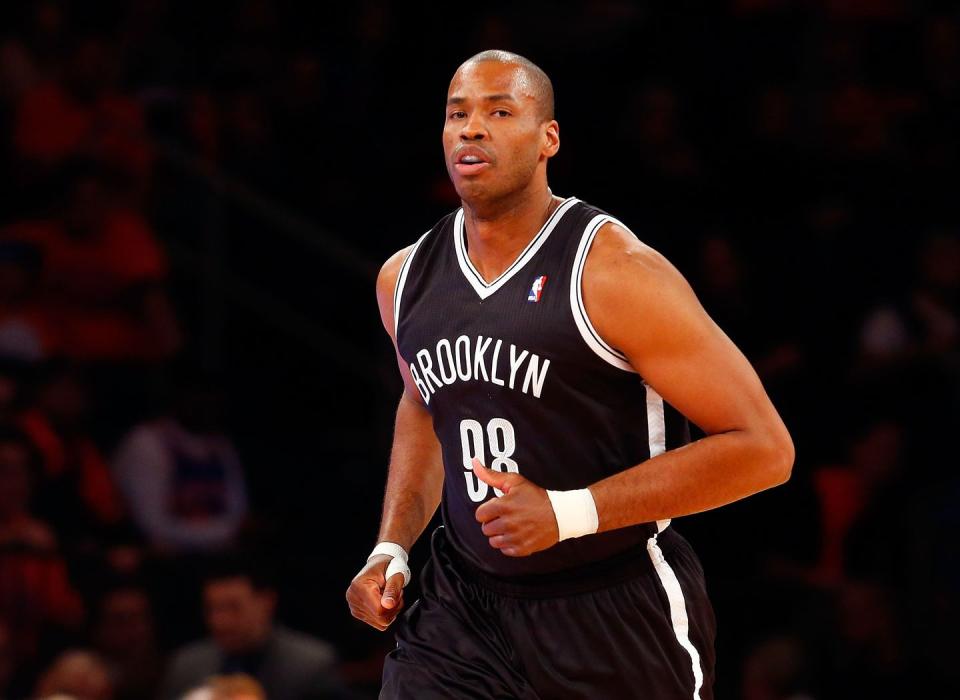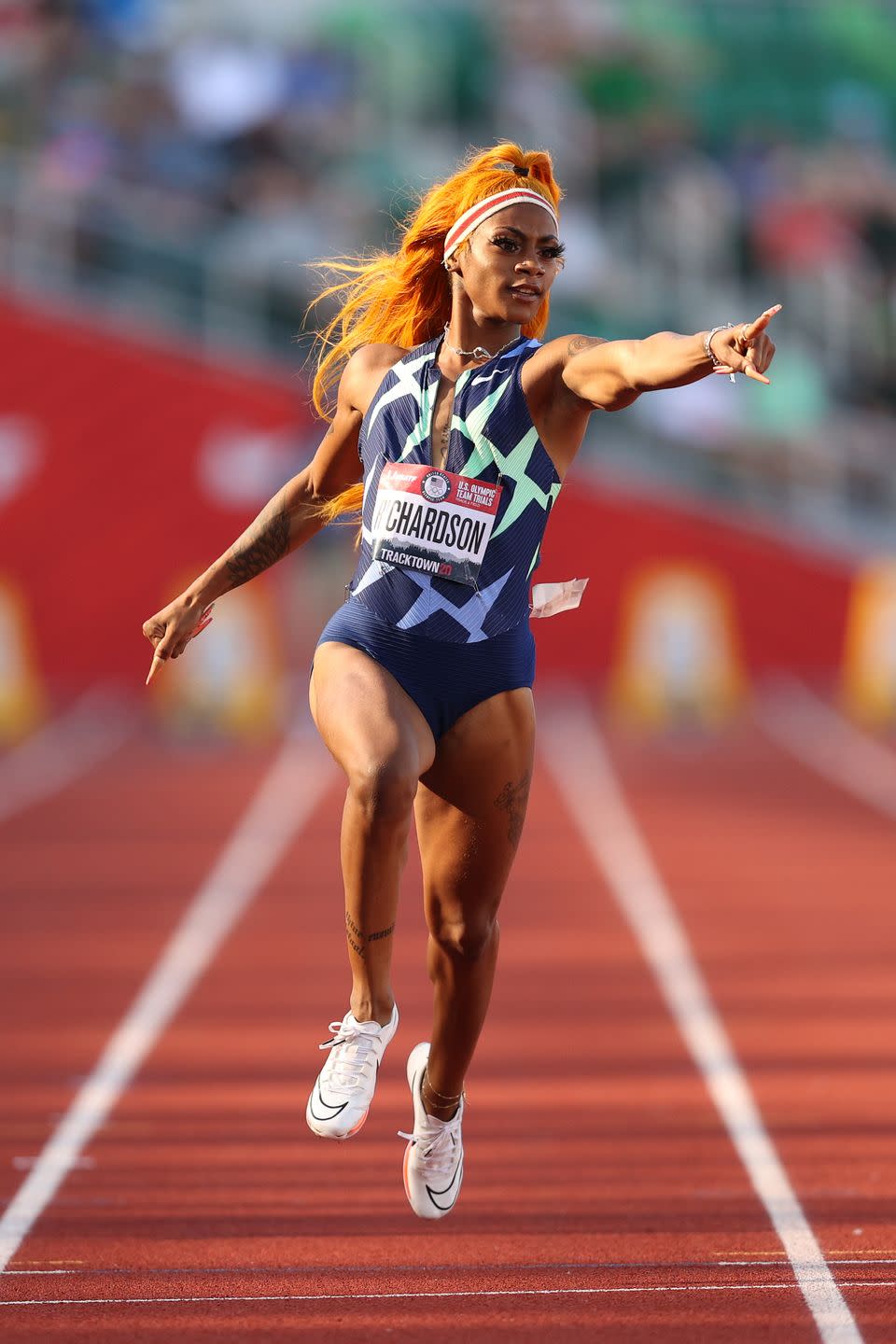Carl Nassib, Sha’Carri Richardson, and the Importance of LGBTQ+ Visibility in Sports

- Oops!Something went wrong.Please try again later.
- Oops!Something went wrong.Please try again later.
Take one look at Las Vegas Raiders defensive lineman Carl Nassib’s recent coming out (making him the first active out LGBTQ+ player in the NFL) and it’s easy to scoff at the surplus of headlines framing this as historic. Another wealthy, conventionally attractive, cisgender white gay guy coming out of the closet? *Very Miranda Priestly voice* Groundbreaking. And yet this one might be worth further examination if viewed through the prism of impact. According to a 2019 research brief conducted by The Trevor Project, LGBTQ+ youth who report having at least one accepting adult were 40 percent less likely to report a suicide attempt. As Conner Mertens told me the morning after Nassib’s coming out, “Maybe some kid is sitting around watching SportsCenter with their dad tonight and finally have a window to talk about their sexuality.” Adds the former player who became the first active LGBTQ+ college football player when he came out in 2014, “Not to mention other NFL players who won’t have to be the ‘first’ anymore.”

In contrast to the coming out of football player and former Bachelor star Colton Underwood, who in April appeared in a 14-minute sit-down with Robin Roberts on Good Morning America to announce his homosexuality, Nassib’s coming out was done on his personal Instagram page in a five-slide post. He began his video with the now-iconic, “Just want to take a quick moment to say that ‘I’m gay,’” explaining, “I’ve been meaning to do this for a while now, but I finally feel comfortable to get it off my chest.” He shared that he hoped people understood he wasn’t doing this for attention—an accusation many made about Underwood months earlier. “I actually hope that one day videos like this and the whole coming-out process are just not necessary, but until then, I’m going to do my best and do my part to cultivate a culture that’s accepting, that’s compassionate.” Nassib added gravitas to the moment, saying he’d be donating $100,000 to The Trevor Project, a nonprofit suicide prevention organization that focuses on LGBTQ+ youth.
The ensuing slides added more nuance to his declaration. Nassib wrote of agonizing over this very moment for the last 15 years, recognizing that the support he has now is not equal to that shown to many who came before him (and even others still today), and admitting his lack of education around LGBTQ+ history and his eagerness to learn. The coming out was met with near universal praise—a sharp contrast to Michael Sam’s coming out years prior (Sam was the league’s first openly LGBTQ+ draft pick). The New York Giants’ Saquon Barkley and Arizona Cardinals’ J.J. Watt expressed their support for Nassib online. NFL Commissioner Roger Goodell released a statement saying, “The NFL family is proud of Carl for courageously sharing his truth today. Representation matters. We share his hope that someday soon statements like his will no longer be newsworthy as we march toward full equality for the LGBTQ+ community.” Former NBA player Jason Collins, who became the first openly gay male athlete in 2013, wrote, “Incredibly happy for him and can’t wait to watch him play this upcoming season!”

Nassib likely isn’t the only active gay player in the NFL, The Atlantic contributing writer Jemele Hill noted on Twitter, “but him coming forward will be huge for those who haven’t gotten there yet.” And though he is the first out active player, he stands on the shoulders of other out NFL players like Michael Sam and former defensive end Ryan Russell, who himself came out as bisexual in 2019 after retiring a year earlier. Russell calls Nassib’s coming out both historical and monumental, not just for all the major sports leagues, but those who, before him, never imagined they’d see their queer selves playing in the NFL. “He is a beacon of hope for athletes around the globe who are in the closet or who have come out before him and felt as though they are directly conflicted in some way with the sport they loved,” Russell says. “So Carl gives a lot of people hope for many different reasons, and that’s always a big deal.”
But Nassib isn’t the only out LGTBQ+ athlete taking center stage this past week. Days earlier, 21-year-old Sha’Carri Richardson secured her spot at the upcoming Tokyo Olympics during the women’s 100-meter final at the U.S. Olympic Trials. Asked about her ever-changing hair color during a post-race interview, Richardson said it was her girlfriend who had chosen that day’s color. “She said it, like, spoke to her, the fact that it was just so loud and vibrant, and that’s who I am.” Similar to Nassib, Richardson’s statement was low-key and more matter-of-fact than it was grand or showy. (Though Richardson, it should be noted, has not as of this writing openly identified as LGBTQ+ outside of a 2015 tweet stating she was bisexual.)

And then there’s New Zealand weightlifter Laurel Hubbard, who also made headlines this week when it was announced that she will be the first-ever openly trans competitor at the Olympics. “I am grateful and humbled by the kindness and support that has been given to me by so many New Zealanders,” Hubbard said in a statement released by the country’s Olympic team Tuesday.
So why does that matter? Many might question the significance of this given the multitude of out LGBTQ+ figures in the media, especially in sports where you have folks like Jason Collins, Megan Rapinoe, Adam Rippon, Gus Kenworthy, Robbie Rogers, and others. Seeing figures like Richardson, Nassib, and Hubbard living out and proud, and being celebrated both for their queerness but also (and this is the really important part) for their athletic prowess can make many of our LGBTQ+ youth feel like they’ve found someone who, like them, is “different” but accepted and celebrated for that difference. It also, as Hill mentioned in her tweet, encourages other athletes to come out, which can help shift the culture of homophobia and transphobia that runs so rampant in sports.
“The platform to impact another human being as a professional athlete is unparalleled,” out retired soccer star Joanna Lohman, just one of many out professional sports players who helped pave the way for Nassib, says. “The advice I have for Carl is to truly harness the power he has to inspire and impact the queer community. He has and will change lives. And, yes, he will face resistance and homophobia along the way, it is inevitable, but he must always remember that the world is a better place, because he has chosen to be an open and out athlete.”
Adds Russell, “Since Carl has an upcoming season and has already significantly changed the landscape of professional sport, I would tell him to take care of his mental, emotional, and physical well-being, and concentrate on having the best season he possibly can. There are plenty of us in the sports world, both LGBTQ+, and allies, that have his back, and we all want him to succeed and be happy. So ball out, brother, and enjoy your full life.”
You Might Also Like

